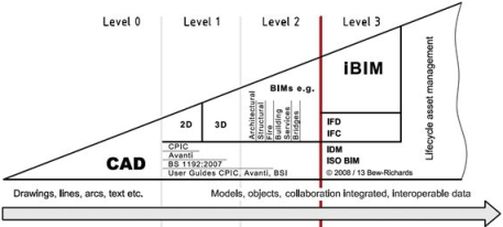Building information modelling (BIM) utilises information-rich models through collaborative working processes in order to improve the quality of information provided at the design and construction phases to save costs by eliminating waste.
BIM was developed initially as a response to the UK Government requiring better control of information on its centrally funded schemes to provide best value following a number of successful case studies. However, the benefits of BIM have been demonstrated outside of central government and as such BIM is being adopted across the industry.
In 2008 a diagram was developed based on the different maturity levels of BIM. This was then used to establish what standards and practices needed to be developed / updated to allow each maturity level to be adopted. The current focus of the industry is to adopt maturity level 2.
By 2016 all Government procured assets will have to achieve BIM level 2. To aid the industry in achieving this requirement, BRE is delivering training, tools and consultancy as well as leading the UK in BIM related research. In addition, Paul Oakley, Director of BIM at BRE, sits on the management board of buildingSMART UKI, the network organisation who develop industry standards for BIM. He is currently leading the development of BIM within BRE as well as IFC, IFD, and IDM within buildingSMART in preparation for Level 3.
Source: BRE Group: About BIM



